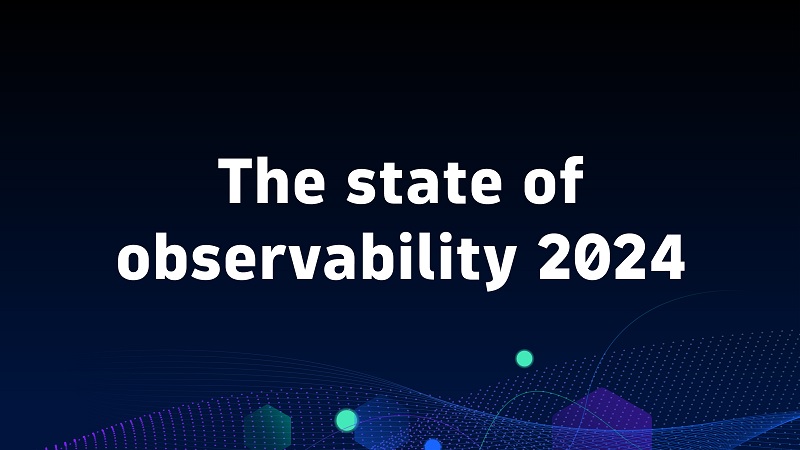
Organizations are continuing to embrace multicloud environments and cloud-native architectures to enable rapid transformation and deliver secure innovation. However, despite the speed, scale, and agility enabled by these modern cloud ecosystems, organizations are struggling to manage the explosion of data they create, according to The state of observability 2024: Overcoming complexity through AI-driven analytics and automation strategies, a report from Dynatrace.

Source: Dynatrace
These research findings underscore the need for a mature AI, analytics, and automation strategy that moves beyond traditional AIOps models to drive lasting business value.
Findings from the research include:
■ 88% of organizations say the complexity of their technology stack has increased in the past 12 months, and 51% say it will continue to increase.
■ The average multicloud environment spans 12 different platforms and services.
■ 87% of technology leaders say multicloud complexity makes it more difficult to deliver outstanding customer experiences, and 84% say it makes applications more difficult to protect.
■ 86% of technology leaders say cloud-native technology stacks produce an explosion of data that is beyond humans’ ability to manage.
■ On average, organizations use 10 different monitoring and observability tools to manage applications, infrastructure, and user experience.
■ 85% of technology leaders say the number of tools, platforms, dashboards, and applications they rely on adds to the complexity of managing a multicloud environment.
"Cloud-native architectures have become mandatory for modern organizations, bringing the speed, scale, and agility they need to deliver innovation," said Bernd Greifeneder, CTO at Dynatrace. "These architectures reflect a growing array of cloud platforms and services to support even the simplest digital transaction. The huge amount of data they produce makes it increasingly difficult to monitor and secure applications. As a result, critical business outcomes like customer experience are suffering, and it is becoming more difficult to protect against advanced cyber threats."
Additional findings include:
■ 81% of technology leaders say manual approaches to log management and analytics cannot keep up with the rate of change in their technology stack and the volumes of data it produces.
■ 81% of technology leaders say the time their teams spend maintaining monitoring tools and preparing data for analysis steals time from innovation.
■ 72% of organizations have adopted AIOps to reduce the complexity of managing their multicloud environment.
■ 97% of technology leaders say probabilistic machine learning approaches have limited the value AIOps delivers due to the manual effort needed to gain reliable insights.
"Without the ability to transform the high volumes of diverse data from cloud-native architectures into real-time, contextually relevant insights, IT, development, security, and business teams struggle to understand what is happening in their environment and lack the answers needed to solve issues quickly and decisively," continued Greifeneder. "While many organizations turn to AIOps, they often encounter limited value due to reliance on probabilistic methods, which can be imprecise and time-consuming to implement. To overcome the complexity of modern technology stacks, organizations require advanced AI, analytics, and automation capabilities. By unifying diverse data, retaining its context, and powering analytics and automation with a hypermodal AI that combines multiple techniques, including causal, predictive, and generative AI, teams can unlock a wealth of insights from their data to drive smarter decision-making, intelligent automation, and more efficient ways of working."
Methodology: This report is based on a global survey conducted by Coleman Parkes and commissioned by Dynatrace of 1,300 CIOs, CTOs, and other senior technology leaders involved in IT operations and DevOps management in large enterprises with more than 1,000 employees. The sample included 200 respondents in the U.S., 100 in Latin America, 600 in Europe, 150 in the Middle East, and 250 in Asia Pacific.
